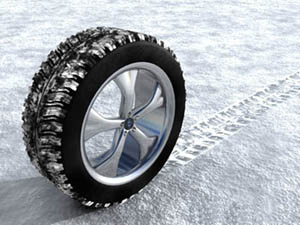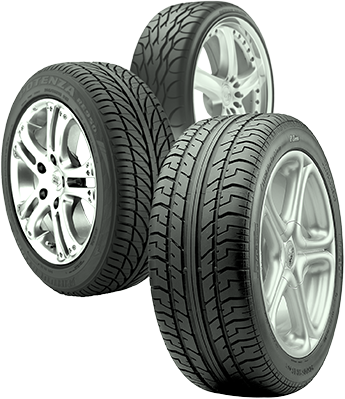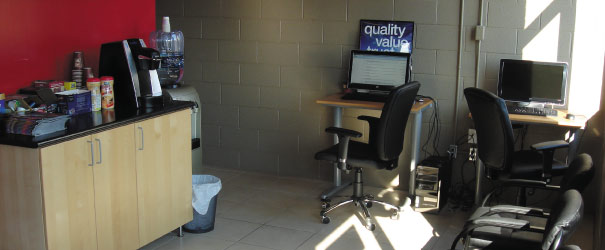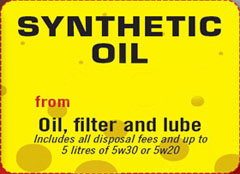Winter Car Care Tips
 Winter car care is and safe driving practices are very important as the ice and hazards of seasonal motoring are here. If you winterize your car before the coming of harsh weather you will enhance your vehicle’s life, saving you from expensive repair bills down the road. And rest assured: winter car care is easy to do!
Winter car care is and safe driving practices are very important as the ice and hazards of seasonal motoring are here. If you winterize your car before the coming of harsh weather you will enhance your vehicle’s life, saving you from expensive repair bills down the road. And rest assured: winter car care is easy to do!
Don’t be one of the estimated 75% of motorists who do not prepare their cars for winter season. Learn how to ready your vehicle, as well as discover how to handle your vehicle during the season with this information.
.
Let’s get started making your motoring as safe as possible this winter!
Winterizing Your Car
Winterizing your car tips for properly preparing your vehicle for the cold weather: inspecting the battery, fluids, tires, windshield and wipers before winter arrives. Make sure your vehicle SUV is ready for the cold, including washing the exterior and cleaning carpets too. Winter driving safely means having the ability to assess changing road conditions, understanding how your vehicle handles in these different situations and keeping your vehicle under control.
Snow and Winter Tires
If you really need to drive during the snowy weather—meaning your boss won’t let you work from home or you need to travel to your relatives’ place out of town—play it safe by investing in great snow tires. Snow tires help increase traction, making your travels a lot faster and safer. And yes, while having to remount and balance your snow tires every single year can be such a pain in the neck, if you’ve ever driven sans snow tires through icy roads (which I seriously don’t recommend!), you’ll know that these specialized tires can mean the difference between a safe trip and a fatal accident. Be safe and use snow tires.
Winter Driving Techniques
Winter driving techniques can be learned with practice. Discover how to drive in adverse winter weather.
Batteries and Winter
Dead batteries and winter driving do not go together. Test or replace yours out now.
Car Fluids and Winter Weather
Your car fluids – oil, antifreeze, brake and transmission – should be checked before winter arrives. Here’s what to do.
Your Windshield in Winter
Your windshield and wipers should not be neglected when preparing your car for winter.
Side View Mirror: Set, Fix
To set your side view mirror for maximum visibility is easy to do. A side mirror repair too. Here’s how.
Getting The Right Tires For Your Car
 Don’t Mess With Success
Don’t Mess With Success
If you like how your car rides and handles, match exactly the tires already on your car. The tire company spent about $750,000 to develop a combination that meets your expectations. Why change?
Something Else
If you’re satisfied with your current car/tire combination, but the exact replacements are too expensive or not available, find what other tires were original equipment on your car. Car manufacturers normally have at least two tire suppliers for each model and the tires are usually very similar. Maybe the other brand is on sale.
Which Season?
For performance-oriented drivers unhappy with their car’s dry or wet grip, it’s easy to make a huge improvement: Switch from the all-season rubber now on your car to high- (or even ultra-high-) performance summer tires. All-season tires give up wet and dry traction in exchange for enhanced mobility in snow. An otherwise equal all-season tire has less grip—dry or wet—than its summer-tire counterpart. Some use the term “three-season” rather than “summer.” It’s more accurate.
Accidental Performance Buyer
Are you a comfort-oriented driver who wound up with a car riding on large-diameter wheels and spine-pounding low-profile rubber? Or maybe the pothole-plagued roads in your area have caused bent wheels and damaged tires. If so, consider purchasing smaller-diameter wheels and installing higher-profile tires. With help from a tire dealer or a “tire size conversion calculator” found on the Internet, you can select a tire that maintains the same overall diameter but has a taller sidewall: A 225/55R17 and a 225/50R18 have virtually the same diameter, but the former’s sidewall is almost a half-inch taller. If a lower trim level of your car came with smaller-diameter wheels, it should be simple to go from, say, 18-inchers to 17s.
Switch Category
If you’d like to make a small improvement, select tires from a different category. Switching from, for instance, a “touring” tire to a “performance” tire will firm up the ride, enhance steering feel and, likely, improve grip. Visit the websites of the tire manufacturers and mail-order tire dealers to find the category of your current tires, as well as possible replacements.
Master Garage is proud to carry and offer tires from:


When is Your Car Ready For an Oil Change?
 The most important service you can perform to maintain your vehicle is an automotive oil change. Engine oil is the life blood of your vehicle, and if changed on a regular three thousand mile interval, it will keep your automobiles engine running for years. While oil keeps things lubricated, the oil filter keeps out the impurities, so the oil filter needs to be changed at every interval. If you plan to perform an oil change on your own, you will need the correct auto repair manual. Always consult your repair manual for proper oil quantity, oil weight, and the proper oil filter when performing an automotive oil change.
The most important service you can perform to maintain your vehicle is an automotive oil change. Engine oil is the life blood of your vehicle, and if changed on a regular three thousand mile interval, it will keep your automobiles engine running for years. While oil keeps things lubricated, the oil filter keeps out the impurities, so the oil filter needs to be changed at every interval. If you plan to perform an oil change on your own, you will need the correct auto repair manual. Always consult your repair manual for proper oil quantity, oil weight, and the proper oil filter when performing an automotive oil change.
Most automotive manufacturers will suggest that you do an automotive oil change between five thousand and seventy five hundred miles, but I would only recommend that interval for synthetic oil. The maintenance schedules that they publish have two options, standard and extreme.
Most consumers think that the standard schedule is fine no matter where you live, but 75% of the world lives in the extreme, hot,cold,city driving,etc! Extreame heat as well as extreame cold, will break down engine oil viscosity and cause it to loose its lubricating properties. So lets stick to an automotive oil change every three thousand miles. Visit our site for advice on every other department of auto repair.
How to Tell Your Car or Truck Needs a Break Job
 Your car or truck needs a brake job when your brake linings are worn down to the minimum acceptable thickness specified by the vehicle manufacturer or the applicable state agency in areas that set their own requirements. The only way to determine if new linings are required, therefore, is to inspect the brakes.
Your car or truck needs a brake job when your brake linings are worn down to the minimum acceptable thickness specified by the vehicle manufacturer or the applicable state agency in areas that set their own requirements. The only way to determine if new linings are required, therefore, is to inspect the brakes.
You may also need a brake job if you’re having brake problems such as grabbing, pulling, low or soft pedal, pedal vibration, noise, etc., or if some component in your brake system has failed. But if the problem is isolated to only one component, there’s no need to replace other parts that are still in perfectly good working order.
There is no specific mileage interval at which the brakes need to be relined because brake wear varies depending on how the vehicle is driven, the braking habits of the driver, the weight of the vehicle, the design of the brake system and a dozen other variables. A set of brake linings that last 70,000 miles or more on a car driven mostly on the highway may last only 30,000 or 40,000 miles on the same vehicle that is driven mostly in stop-and-go city traffic.
Our Facility
 Enjoy a very clean environment as we work on your automobile. Not only do we take great care of our customers but pride ourselves in the cleanliness and organization of our shop!
Enjoy a very clean environment as we work on your automobile. Not only do we take great care of our customers but pride ourselves in the cleanliness and organization of our shop!
Customer Care

Fully equipped repair facility with complimentary coffee, wireless internet and more while you wait or free shuttle service within the surrounding area.







